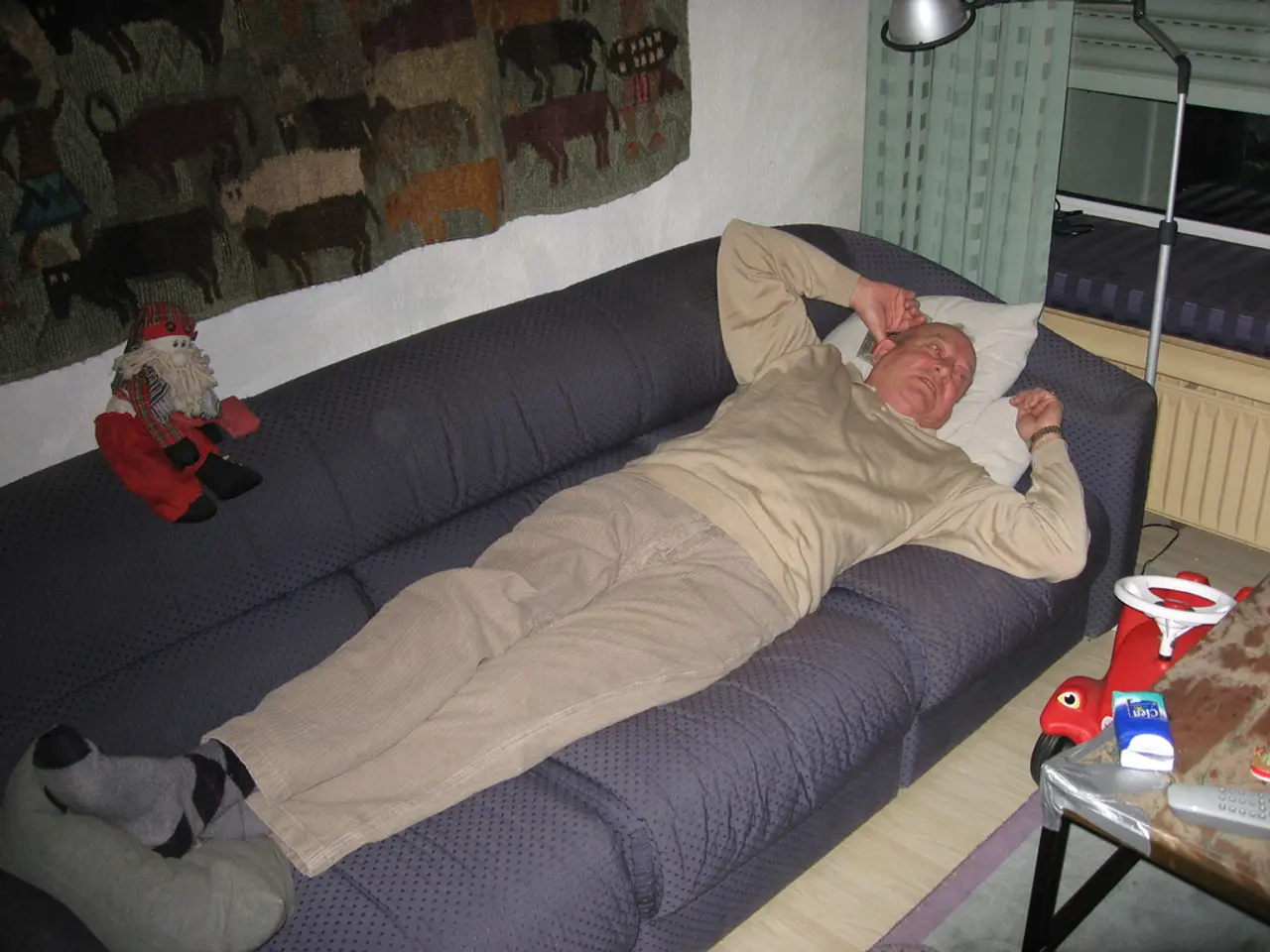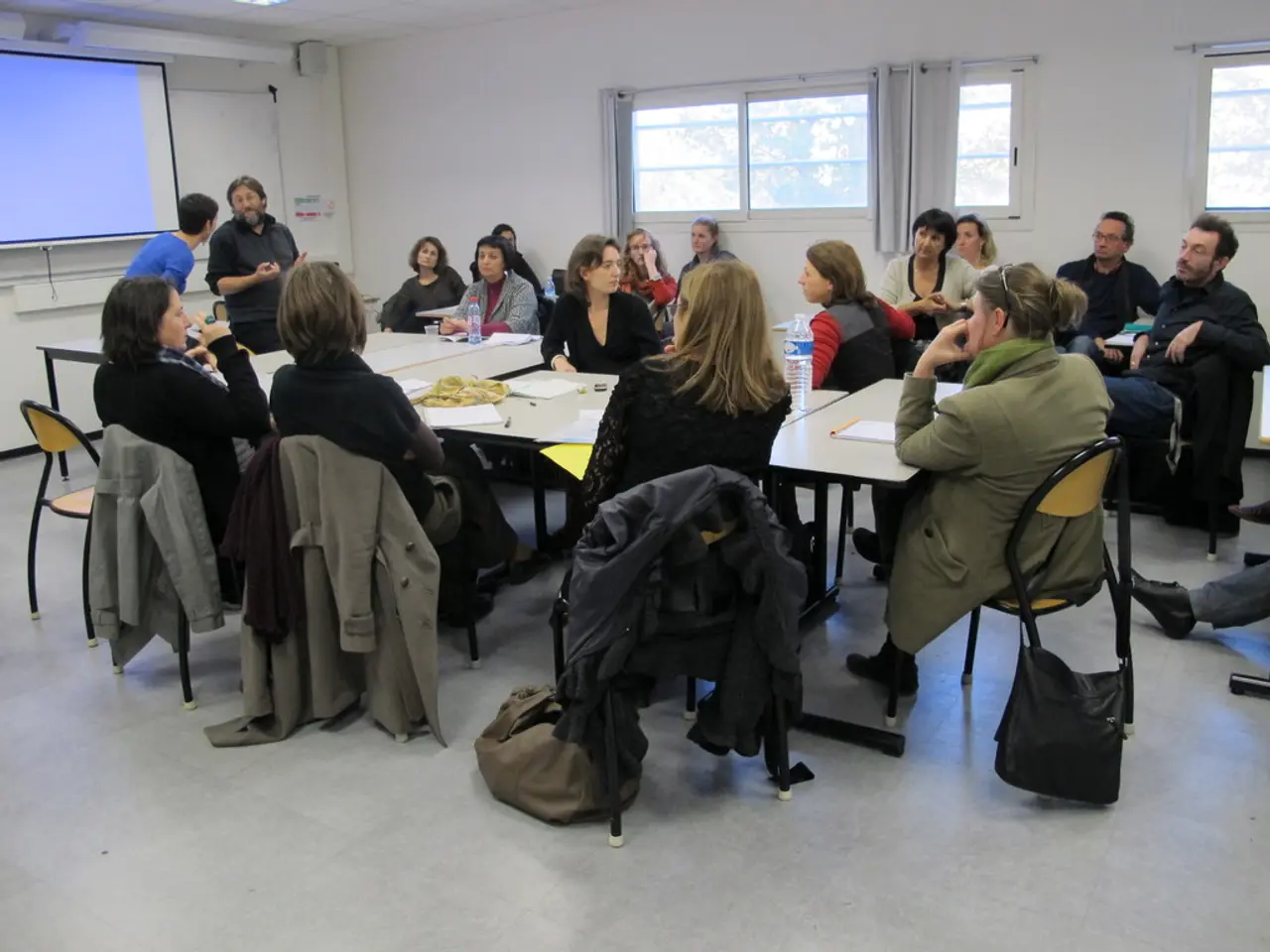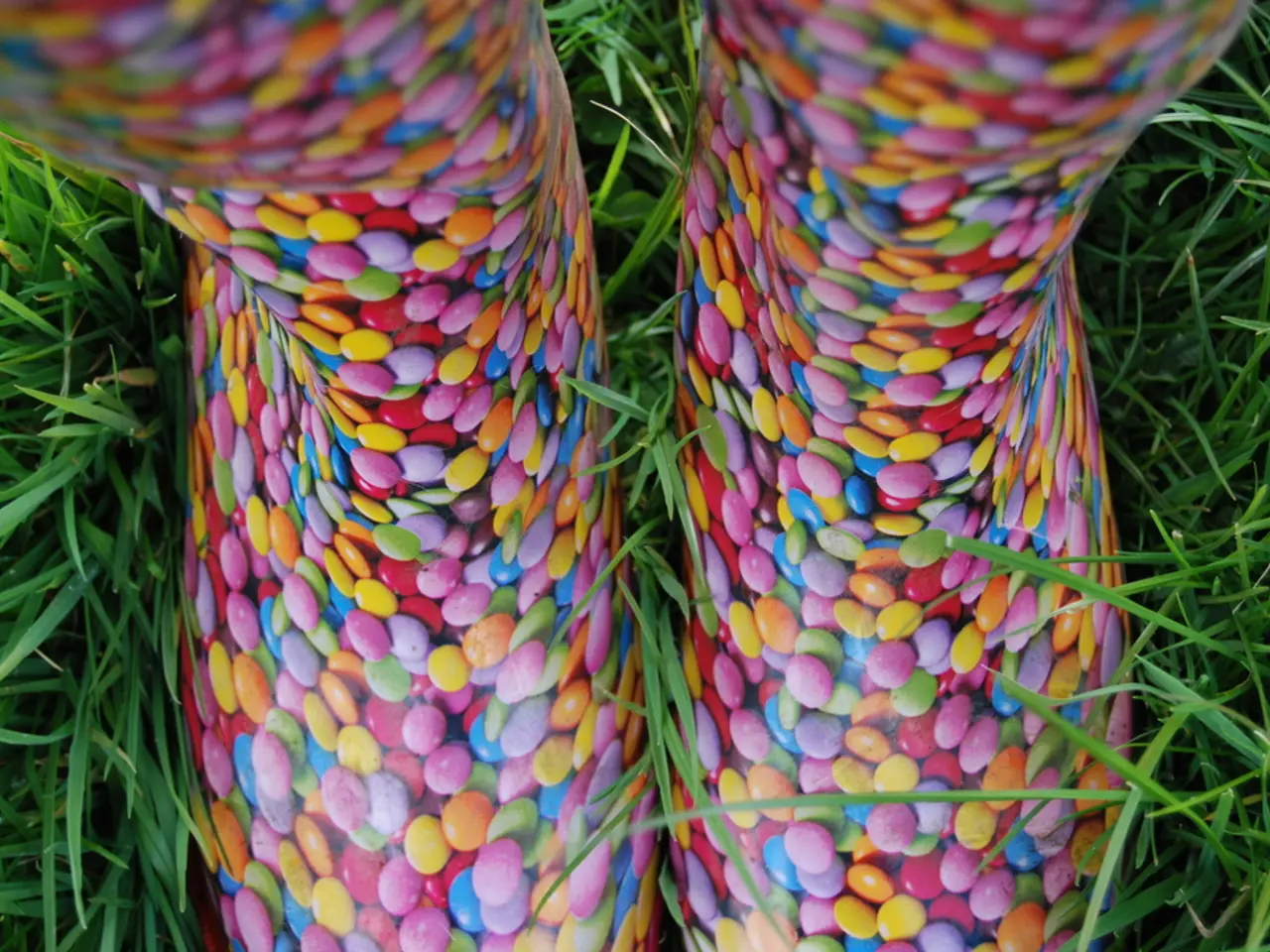REM sleep disorder symptoms, root causes, and available treatment options explained
Rapid Eye Movement (REM) Sleep Behavior Disorder (RBD) is a unique sleep disorder that causes individuals to physically act out their dreams during the REM sleep phase, a time when muscles typically enter a state of temporary paralysis [1][2][4].
In cases of RBD, the loss of normal muscle paralysis leads to a variety of physical reactions, some of which may appear harmless but are actually dream-enactment behaviors. Common nonviolent physical reactions include small, repetitive limb movements such as gentle waving, kicking, or arm twitching, eyelid or facial movements like twitching or slight grimacing, talking or vocalizations like mumbling or softly calling out, grasping motions such as picking up imaginary objects, turning or repositioning in bed, and leg movements like mild kicking or jerking [1][4].
While these nonviolent reactions may be overlooked or mistaken for restless sleep, they are linked to dream activity and the absence of normal REM sleep muscle paralysis [1][2]. In some cases, however, the risk of violent movement during an RBD episode is higher if the person is having an aggressive or frightening dream [3].
Lifestyle changes can help improve sleep habits in people with RBD. Adopting a predictable sleep-wake cycle, avoiding sleep deprivation, and avoiding alcohol can all contribute to better sleep quality [5].
When it comes to diagnosis, a dedicated sleep center with expertise in parasomnias should examine a person with symptoms of RBD. A sleep study may be ordered to test for RBD and other sleep disorders, involving staying in a specialized facility throughout the night with monitoring of sleep and breathing activity, brain action, and muscle movement [6].
People with RBD might injure themselves or others while sleeping due to their physical actions during the REM phase. Safety measures such as using a mattress on the floor, placing cushions around the bed, placing the bed against a wall, installing padded bedrails, keeping furniture and sharp objects away from the bed, removing potentially dangerous objects from the room, moving the bed far from the window, and having bed partners sleep in a separate room or bed can help keep an individual with RBD and their sleeping partner safe [7].
Approximately 38% of people with RBD might develop other neurological diseases such as Parkinson's disease, Lewy body dementia, or multiple systems atrophy [8]. Studies suggest that antidepressant medications trigger RBD in up to 50% of users [9].
Low doses of clonazepam, from the benzodiazepine class of drugs, can help in about 90 percent of people with RBD. These drugs suppress muscle activity and relax the body during sleep [10]. If clonazepam is not effective, certain antidepressants or melatonin may help to calm violent behavior during sleep [11].
Treatment for RBD is usually successful, involving prescribed medication and adapting sleep habits. If an underlying neurological disease is causing symptoms, the outlook will depend on the severity of the disease. Regular follow-up checks for Parkinson's disease are recommended for individuals with RBD [12].
REM sleep behavior disorder (RBD) is a type of sleep disorder that involves unusual actions or behaviors during the rapid eye movement (REM) sleep phase. Episodes of RBD tend to occur towards the morning hours when REM sleep is more frequent [13].
It is essential to seek medical advice if experiencing symptoms of RBD to ensure proper diagnosis and treatment, as well as to monitor for potential underlying neurological conditions.
References: [1] https://www.ncbi.nlm.nih.gov/pmc/articles/PMC5664406/ [2] https://www.ncbi.nlm.nih.gov/pmc/articles/PMC6027143/ [3] https://www.ncbi.nlm.nih.gov/pmc/articles/PMC5560894/ [4] https://www.ncbi.nlm.nih.gov/pmc/articles/PMC5664406/ [5] https://www.ncbi.nlm.nih.gov/pmc/articles/PMC5664406/ [6] https://www.ncbi.nlm.nih.gov/pmc/articles/PMC6027143/ [7] https://www.ncbi.nlm.nih.gov/pmc/articles/PMC5664406/ [8] https://www.ncbi.nlm.nih.gov/pmc/articles/PMC6027143/ [9] https://www.ncbi.nlm.nih.gov/pmc/articles/PMC5560894/ [10] https://www.ncbi.nlm.nih.gov/pmc/articles/PMC6027143/ [11] https://www.ncbi.nlm.nih.gov/pmc/articles/PMC5560894/ [12] https://www.ncbi.nlm.nih.gov/pmc/articles/PMC6027143/ [13] https://www.ncbi.nlm.nih.gov/pmc/articles/PMC5664406/
- People with Rapid Eye Movement (REM) Sleep Behavior Disorder (RBD) might experience various physical reactions during their dreams, including talking, grasping motions, and leg movements, which can be linked to dream activity and the absence of normal REM sleep muscle paralysis.
- It's crucial to monitor and manage RBD, as the disorder can lead to the individual or others getting injured during sleep due to physical actions during the REM phase.
- RBD may also be associated with other medical-conditions, such as neurological-disorders like Parkinson's disease or Lewy body dementia, and certain medications, such as antidepressants, may contribute to the onset of RBD.




